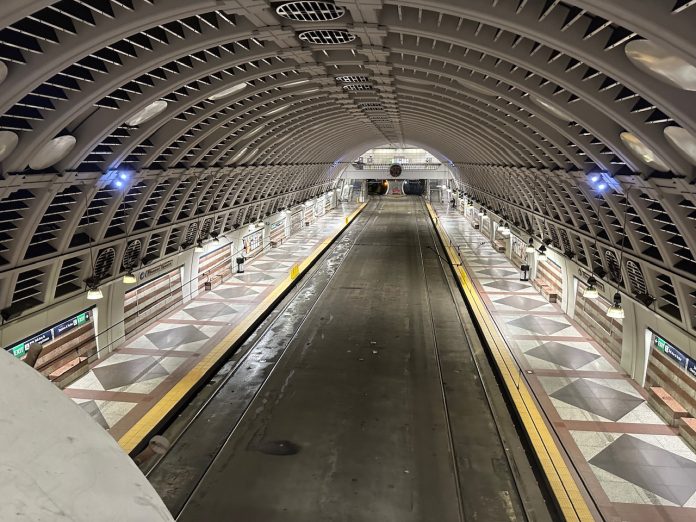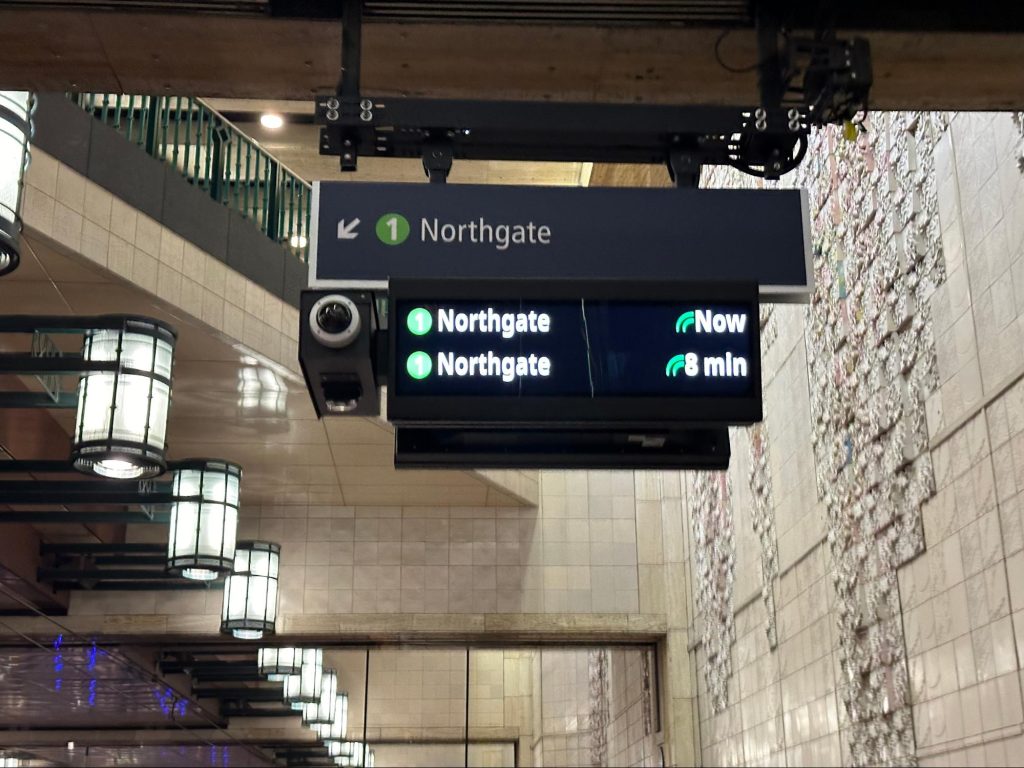
Sound Transit has a severe audio problem, with Link light rail stations transformed into an unwelcoming cacophony of announcements. Competing audio alerts flood the stations, making them impossible to individually comprehend. Alerts fire off in rapid succession as a robotic narrator declares that “Sound Transit does not tolerate harassment.” And a grating “you’ve got mail” style jingle warns exasperated riders that yet another announcement is coming.
It’s just too much. It’s a mess. And it makes Sound Transit look inexperienced and careless. These are not pranksters ruining the station experience; the agency is doing it to itself.
Last year, the agency restored real-time arrival information, launched new audio announcements, and promised to roll out new digital signage. For many riders, it was a godsend. Finally, Sound Transit was delivering on basic and long-awaited rider experience tools!
But while the new digital signs are unequivocally good, the announcement system has not improved beyond providing new types of information. That enhancement is lost in the awful sounds it produces, as stations turn into palaces of auditory horror. It doesn’t have to be this way though.
Sound Transit can change how it operates its station announcements and the passenger information management system (PIMS) that powers them in a variety of ways.
Firstly, the jingle has got to go. This isn’t the 1990s anymore; AOL is all but gone. Transit agencies the world over use more sensible and welcoming jingles. Sound Transit should take notes from places like The Netherlands and Switzerland that have lovely jingles.
Secondly, the agency’s voice work needs to get a makeover. Whether or not the voice is digitally generated or derived from actual recordings from a real human, the voice should sound reasonably natural and be calming, and it should be comprehensible, with words not running into each other.
Thirdly, the volume in most stations is just too high and needs to be reduced. Excessive volume pushes even a single announcement to echo off of walls and ceilings, blurring announcements together and creating a disturbing atmosphere in stations. This is even worse when other announcements are simultaneously being blared in them.
Finally, announcements are just too frequent and need to be pared back. This problem is particularly evident when multiple trains are arriving in short succession. As the system grows, the frequency of trains arriving at platforms will increase, and presumably so will the corresponding two-minute warning and “train now arriving” announcements. Sound Transit should get the frequency of announcements under control so that they don’t stop and start every 20 to 30 seconds. Getting PIMS to combine announcements, imposing frequency limitations for non-arrival announcements, and restricting the location of where certain types of announcements are heard in stations would help.
These issues are solvable. Sound Transit needs to roll up their sleeves and get to work on fixing this auditory mess. Their riders will thank them if they do.
Stephen is a professional urban planner in Puget Sound with a passion for sustainable, livable, and diverse cities. He is especially interested in how policies, regulations, and programs can promote positive outcomes for communities. With stints in great cities like Bellingham and Cork, Stephen currently lives in Seattle. He primarily covers land use and transportation issues and has been with The Urbanist since 2014.





